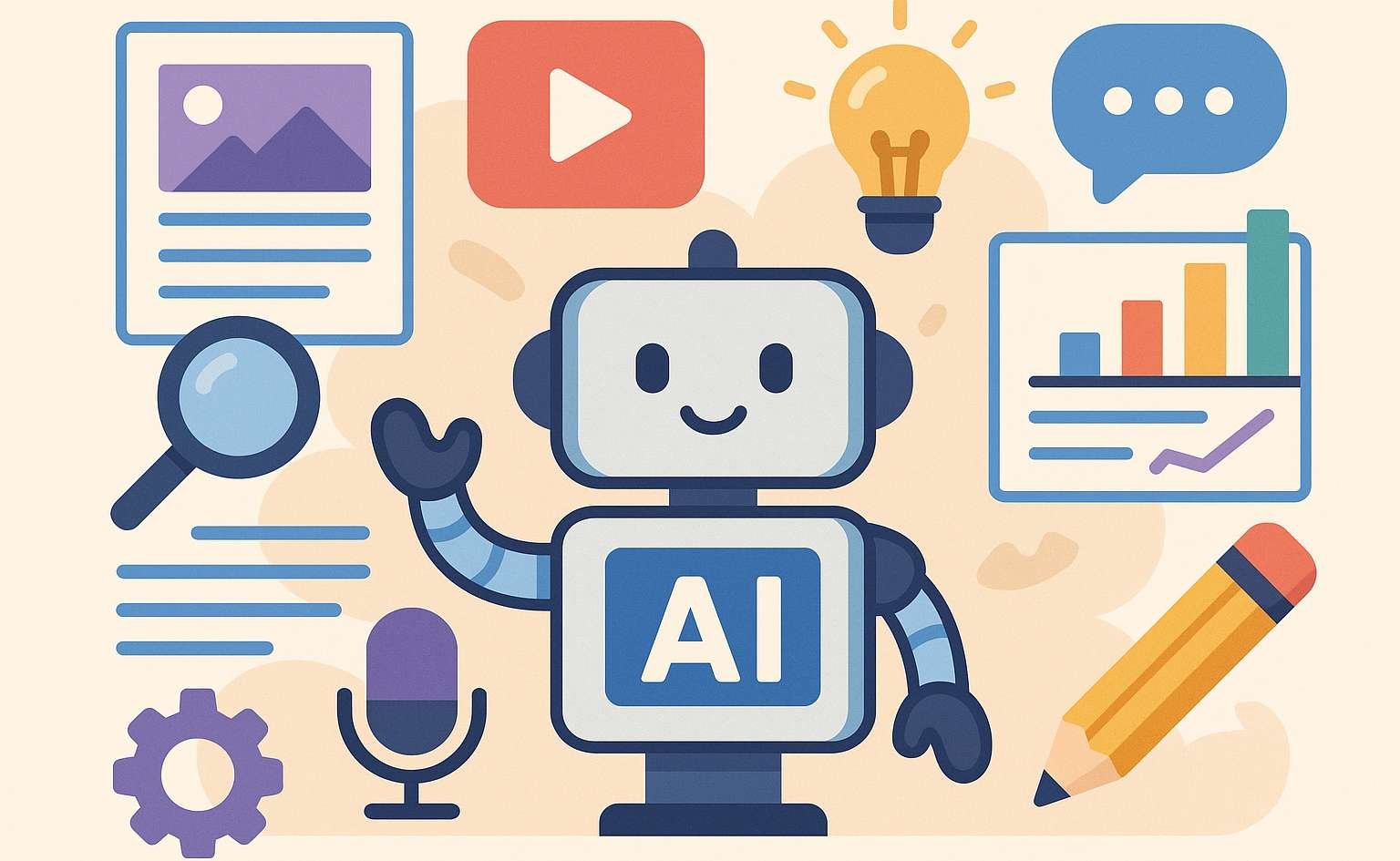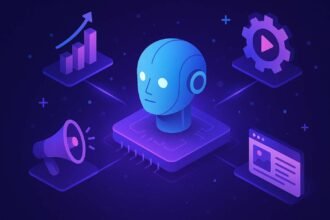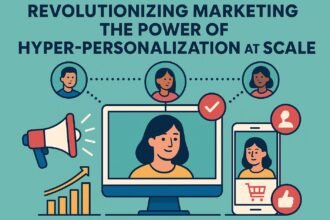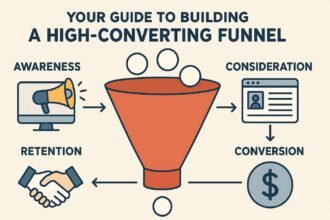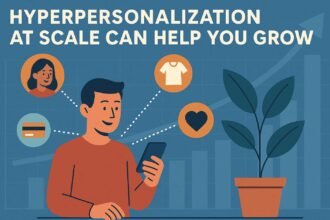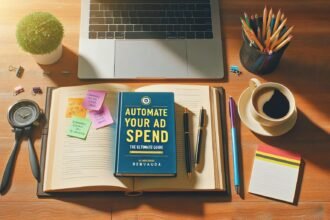Harnessing AI: Transforming the Creative Arena
From science fiction to your laptop: The rise of AI Artificial intelligence has come a long way since Isaac Asimov wrote about it in his stories. Today, AI is no longer just an idea found in novels or movies. It has become a reality that many of us can access via online tools and applications. These programs tap into the immense power of machines to analyze vast amounts of data and perform complex tasks faster and more accurately than before.
How it works AI content tools employ different techniques that help computers interpret language, recognize patterns, or understand meanings in human communication. The exact method depends on the goal: chatbots often rely on natural language processing that draws from vast text databases; image generators use generative adversarial networks (GANs) to create visuals; and music composers combine recurrent neural networks (RNNs) with long short-term memory units (LSTMs) to produce melodies. By mimicking human cognitive processes, AI content tools can generate meaningful output tailored to your creative needs.
From Science Fiction to Your Laptop: The Rise of AI
So much of what we associate with AI still sounds like science fiction: Skynet, sentient robots, computers that will become self-aware and take over the world. However, AI is also a set of incredibly practical tools that you can use right now sitting in front of your laptop. Stable Diffusion generates art. ChatGPT writes. Dall-E makes art. MidJourney paints. Jasper can help with marketing copy. Answer the Public gets you started on blogging — and so much more.
The uses for AI content tools are starting to change the way we work and interact with technology. Until recently, expectations for AI were still somewhat futuristic. Might one day be able to take a few bullet points and draw up what amounts to a first draft? Might be able to get a computer to write the code that’s needed to turn a design into something interactive? How about brainstorm the main points of a presentation, then structure the work for the slides? These expectations seem quaint now because they’re things that every AI tool currently can do. Some better than others, of course, but those simple requests are very achievable and with all five of the tools mentioned. In the space of something like six months, the four fundamentals of practical AI content tools have matured to a point where shifts in use will deepen and broaden their adoption around the world.
How it works
Who Can Use It?
Artificial intelligence (AI) is all about teaching a computer to think like a human. AI is a broad term for algorithms designed by humans that teach a computer to replicate human ability to perform tasks in a way that a human would do. For example, content creation tools use algorithms designed to replicate human intelligence around language, images, videos, music, and other creative tasks.
While AI sounds like a complicated technology, AI content generation tools are designed specifically for users with little or no prior experience in technology or programming, allowing practically anyone to harness AI’s creativity. User prompts, alongside AI-generated creative content, help dictate the direction of the AI tools. Using a format similar to a casual chat, prompts are entered in a chatbox, such as (“Write a poem about autumn,” “Build a rap song,” or “Compose a thank you note,”) to create a variety of creative content in words, images, or sound.
Why AI Content Tools Are Your New Best Friend
The range of AI content tools helps users unleash their creative spark in several ways. Creative idea generation can be tough—especially in professional environments that demand groundbreaking ideas on a deadline. Even with a deadline looming, AI content tools can help brainstorm new thoughts, then add more depth and breadth to each of these ideas. That can lead to dynamic new concepts and perspectives.
The creative process often involves substantial research, generating additional ideas, molding the shapeless concept into a complete form, and polishing the final creation. AI content tools assist throughout, making each step easier and quicker. If any phase stalls, these tools help break through the block. They empower users to achieve creative breakthroughs more often, navigate the process with greater confidence, and realize latent potential.
The AI Content Toolbox: What’s Available?
From generating prose to producing pictures, from remixing music to programming an app, AI-based solutions are transforming the way we create content. These new content-generation systems let anyone unleash their creative spark.
Underlying this broad spectrum of solutions are advances in prompting engineering, enabling users to formulate simple instructions capable of eliciting complex responses from large models. Artificial intelligence models trained on vast quantities of quality data learn the structure and characteristics of various content styles and techniques, including writing, painting, programming, and composing. In response to user prompts, the models apply these acquired rules to associations between the input and the data they have been trained on.
Exploring AI Content Creation Solutions
The idea of machines that imitate the neural circuits of the human brain and enable computers to “think” has long been an integral part of science fiction themes and futuristic predictions. It’s also long been the dream of engineers and programmers. With all the hype and media coverage focused on the prospects of human-level AI, most people may not realize they’re now living in the midst of an AI-machine-revolutionary moment. AI solutions are no longer part of a sci-fi fantasy—they’re delivered through laptops, tablets, and smartphones and used primarily by ordinary people—not just by scientists or tech gurus. AI content tools are among these solutions. In fact, they’re a near ideal way to put AI to work for you right now, helping you unleash your creative spark.
AI content tools are an excellent choice for anyone who wants to use AI for creative purposes, whether to explore a creative field for fun, experiment with a new hobby, or develop a new career, as well as for existing professionals. They can serve as a springboard to new ideas in writing, art, design, photography, video, music, architecture, advertising, business, science, engineering, and more. The term “AI content tools” broadly encompasses numerous solutions that perform different types of tasks in the content creation process. It is useful to distinguish the different types, understand the underlying technology, and review the key features that shape their applications and potential benefits. Such a conceptual framework guides the actual choice of particular tools and how they fit into the creative process.
Overview of Different Categories of AI Content Tools
Certain categories of AI content tools are better suited for specific creative tasks. Chatbots can generate conversational text such as advertisements and mock sales dialogues. AI writing assistants refine text in style, grammar, and spelling. Idea generators utilize prompts to inspire concepts for products, marketing campaigns, or other endeavors. Natural language-to-image generators translate textual inputs into visual content. Speech-to-text converters transcribe recorded dialogue, enabling users to repurpose spoken content in blogs, articles, or scripts. Image generators create vector graphics and logos, while AI video creators edit video footage and automatically generate various clips.
Technology can augment human capabilities. Writers might employ AI content tools for brainstorming, despite the risk of pink noise. Composers can sample neural networks, and producers use AI to produce backing tracks that complement or counterpoint their compositions. Video editors harness AI to generate splicing ideas. Advanced AI algorithms can even produce entirely new tracks of music, enticing both professional and amateur musicians.
Key Features and Functions of AI Content Tools
The essence of creativity lies in the ability to think differently—to dare to ask “What if?” or “Why not?” and then proceed to explore those questions or challenges. Whether it’s penning a story, composing a song, designing a campaign, or brainstorming any new creative idea, AI content tools can help unleash the creative spark.
The integration of artificial intelligence, once the realm of science-fiction and space movies, into practical applications has unlocked doors previously inaccessible to the regular person. One can now sit at their desk, open a browser, and tap into the power of AI—tools that enable creativity to flow more easily and even encourage venturing into entirely new creative directions. These AI content tools harness machine learning techniques applied to extensive datasets, including unsupervised learning, supervised learning, reinforcement learning, deep learning (especially in the form of large language models), transfer learning, and generative adversarial networks (GANs).
Benefits of Using AI for Creativity
The answer to “Why AI Content Tools?” is simple. These tools help you express your creativity, using AI, so you don’t spend years trying to “train the AI.” Instead, you can unleash your own creative spark.
From brainstorming ideas and kickstarting new projects to breaking through writer’s block and planning entire campaigns, AI is a great support for the creative process. It also helps in producing first drafts of a whole range of deliverables, which you can then polish and refine to suit your own personal or company style.
Enhancing Idea Generation
AI content tools are an invaluable aid when you’re facing a blank page, struggling to refine a rough draft, coping with a creative block, or need to generate a list of ideas without having to go through the grind of brainstorming. They complement creative human beings rather than compete against them by rapidly producing ideas and suggestions that you can then build on or use in whatever way you want.
When used correctly, AI content tools keep the stress of the creative process to a minimum by performing the grunt work for you, leaving you with the fun of selectively developing, expanding, polishing, and enhancing their output. The tools also produce many more ideas and options in a much shorter time than would be possible without them. Last but not least, having access to every type of brainstorming you could imagine in just a few seconds is a powerful way of overcoming creative blocks and escaping the trap of tunnel vision.
Streamlining the Creative Process
Howling at the moon, cursing the darkness, banging your head against the wall—these might have seemed like the only ways to be productive if you had creative block, working on a project or in a creative profession. But with the increasing availability and affordability—and the improving quality—of AI content tools, creativity can instead feel like one of those dimmer switches, beginning to glow just a little with minimal effort.
These tools help by eliminating much of the less creative workload of projects and producing a small collection of ideas to help start new pieces—a process that streamlines your creativity rather than blocking it. The implications for advertising, music, film, and photography are just the beginning, as demonstrated by the selection available to openai.com. By selecting the most appropriate AI content tool for a particular creative stage and by evaluating and processing the output carefully, AI content tools can unleash the creative spark in any of us.
Overcoming Creative Blocks
Creative blocks happen to the best of us. They’re not only frustrating, but can keep us stuck for days, weeks, or longer. Why do they happen? The reasons can be as unique as your thumbprint. Sometimes it’s related to stress: a pending deadline, a difficult client, or general fatigue. Other times it may be that you were pushing yourself too hard, inputting hours of creative thought without sufficient nourishment or rest.
How can AI help? AI content tools provide an interactive session during which a variety of differently nuanced perspectives come back to you. Instead of staring at a blank page or sheet and hoping the muse strikes, you can engage with the process. Your creative spark will awaken naturally as you tap your creative generator. That block suddenly looks less like an immovable, insurmountable, terrifying obstacle—and more like a challenge that’s ready to be tackled.
Case Studies of AI in Creative Industries
Artificial intelligence transcends a mere “dream tool,” rapidly becoming an integral partner for creators across domains. From brainless brainstorming through identifying the key takeaways from dense documents, AI content tools play a vital role in the creative process—and not only for “creatives.” Writers, marketers, designers, programmers, accountants, and more rely on these technologies to get their jobs done—or at least get unstuck when inspiration runs thin. The following real-world examples illustrate how AI content tools can help users unleash their creative spark.
In advertising agencies around the globe, AI content tools automate the creation of first drafts for ads, slogans, and campaigns. These rough sketches not only inspire staff posters and marketing team meetings but also give account executives solid answers to client questions like, “What have you done for me lately?” By supplying fresh ideas, AI tools enable creative teams to devote more time and energy to refining and polishing campaigns instead of merely generating them from scratch.
Musicians leverage AI content tools to draft memos, write concert announcements, compile song requests, and distribute accounts receipts. Designed songs and playlists act as creative springboards, spurring artists to create new works or spark ideas for incorporation in composing original pieces. Visual artists depend on AI content tools to browse presentation drafts, design project proposals, manage Daily Rate submissions, process receipts, and generate inspirational images for new projects.
AI in Advertising
In advertising, AI-generated content offers fresh perspectives on how products can be utilized in different situations or provides interesting use cases for its customers. While the core idea and messaging are developed by the human creative team, AI-generated content enhances presentation by illustrating key concepts. Commercial ideas, storyboards, and scripts also benefit from AI content. Regardless of the media format, the process largely remains the same: the AI swiftly generates visuals, ideas, and copy so that the creative team can select the best elements. This support empowers creatives to focus on the essence of their commercial concept.
Discovering the right creative design and concept can be time-consuming and tedious. However, with AI content tools, the process is accelerated by rapidly exploring multiple concepts, designs, or moods. Creativity no longer centers on the question, “What should I create?” but rather on determining suitable AI prompts to achieve the desired result. Essentially, designers sculpt their prompts until the AI-generated content aligns with their vision. When testing multiple media strategies and concepts, Google Experiments utilizes AI to generate combination outputs in mere minutes.
AI in Music Composition
Thinking about a new song but don’t know where to start? Processing the endless inspirations stored in your brain to a draft can be a daunting task. AI content tools allow you to turn the flickering images in your mind into relatable music. With the right tools, you can convert different themes and inspirations into complementing tones, notes, and even lyrics that can be further edited and detailed manually. Certainly, the personal input remains a crucial part in this process, but AI content tools are undeniably effective at unleashing the creative spark.
Although some artistic purists are not yet comfortable with it, AI is destined to become the most useful assistant for musicians and composers, wielding all the expertise accumulated throughout history and across all kinds of genres. In much the same way as Photoshop liberates amateur photographers from some of the technical difficulties of picture editing, AI composition tools can help anyone create music as they imagine it. It just takes a bit of research and trial and error to find the best AI composition tools for your personal needs.
AI in Visual Arts
Artificial intelligence technology is an effective ally for the creative professions, and photography, visual design, and art entrepreneurship are no exception. Photography and Image Editing AI Content Tool for Business and Travel Photography, for example, can be used for background removal or landscape enhancement, enabling photographers to spend less time editing after the photo shoot and more time their passion for travel.
With a selection of prompts, designed for visual artists to generate characters, stories, and settings, Artbreeder is an AI-powered collage that enables artists to upload their work and mix it with others in the community, combining elements from different images in a way that expands human creativity. Whether the new work is photorealist or abstract, Artbreeder guides human artists through the process of collaboration and inspiration with AI, taking them out of well-established ruts and into new creative territory.
Challenges and Limitations of AI Content Tools
As helpful as generative AI tools can be, they are not without their downsides and limitations. For example, the automated output they generate still usually requires careful review and editing. Some tools require human users to provide some initial input—such as a seed phrase for generating creative writing, a portfolio to determine musical style, or a theme or rough sketch for producing visual art—before they can be put to efficient use. Many tools often offer only limited ranges of customization or control, which means creative professionals must sometimes seek additional software or their own talent for refinements and polishing. Also, current AI-content tools cannot fully take over the creative process from humans—they can only complement it by handling smaller tasks and improving overall productivity during the ideation phase.
Other concerns arise due to the very efficiencies AI-content tools provide. Stories of disgruntled musicians automating their music-writing responsibilities and then grudgingly sitting back and watching AI-generated songs take the spotlight abound on social media. Fears of academic plagiarism—and, indeed, increasingly sophisticated AI-detector software designed to combat it—are also widespread. Early hype around the capabilities of AI-generated content has skewed public perceptions, often ignoring real limitations. Allowing AI to do a large part of one’s work can become an easily addictive crutch, weakening the user’s own skills and judgment over time. And, of course, AI-content tools pose the fundamental question: What does it really mean to be creative in a world where machines can accomplish the same tasks on demand?
Quality Control Issues
Artificial intelligence never gets tired, distracted, or bored and its supply of ideas never seems to run dry. But it does have its limitations, and one of those is quality control. The services on the market today can be hit and miss, with some outputs rubbish and almost unusable without human intervention, some very useful when combined with human input and editing, and some merely of okeish quality—easily missed if you don’t double-check. It’s here that a good art director or producer remains invaluable—even when they’re working with content created primarily by AI. Despite its current level of creativity, AI still needs constant guidance during the creation process; it can’t directly replace a brief. Human curation is necessary, with many companies increasing their headcount in that area to support teams handling AI-generated output.
High-quality creation is vital within client services. It’s not just about good ideas or nice copy; the same demands on grammar and spelling also apply to what AI produces. Unfortunately, tools such as ChatGPT often struggle with spelling and grammar, sometimes generating incorrect facts and information. It doesn’t comprehend words or their meaning—understanding semantics in natural language is complex and involves more than just processing syntax. Consequently, AI can provide creative ideas but doesn’t truly understand them. To get the most from AI, ask the AI to explain what it has done or the choices it has made. Although it can’t appreciate them, the AI can offer its rationale or context for outputs.
Ethical Considerations
As powerful allies in helping users unleash their creative spark, AI content tools must come with an ethical manual to ensure they remain excellent helpers instead of becoming copycat villains. The generated content might be inaccurate or incomplete, with made-up facts, fiction, prostitution, propaganda, or discriminatory elements. Despite their name, content generators do not create something truly new and original—they are simply based on previous texts, reverting to existing biases.
A constant stream of new content generated by AI might encourage people to consume more, fostering a consumer culture. This approach is more likely to produce a mediocre image for creative industries whose activities are also deeply related to critical thinking, interpretation, storytelling, and challenging the status quo. Self-driving cars might be able to navigate efficiently, but they cannot (and will not) feel the ecstasy of driving or the simple joy of driving with the windows down and music blasting.
Dependence on Technology
When these creative assistants go awry or create the wrong product, much of the blame goes back to the user and their input, and not the creative process itself. Using AI content tools in a creative discipline creates reliance on new technologies; as some of the tasks needed to create a product are relegated to others or simply automated, the user begins to lose their ability to complete these tasks, which can limit their original power to create. An additional matter that is yet to be resolved is that using AI to generate words, images, or music can contravene the intellectual rights of the humans who originally created these inputs for the model to “learn.”
Whether the positives outweigh the negatives remains to be seen. However, if using AI content tools helps people to bring their ideas and imagination to life, then it should not be stopped, blocked, or limited. AI content tools simply offer one more way for people to unleash their creative spark.
Best Practices for Integrating AI into Creative Workflows
Alongside the benefits, some challenges and limitations also warrant consideration. Although AI can help create the first draft of an idea, human moderation remains essential to ensure quality and alignment with the intended messaging. Project-specific ethical issues — such as potential bias, the risk of plagiarism, or the appropriateness of using AI for a certain type of creative work — should also be carefully assessed. Moreover, overreliance on AI could potentially stunt personal growth and creativity development.
To effectively integrate AI into a creative workflow, start with these best practices. First, evaluate the tools according to the specific needs and challenges of the project. A substantial category of AI content tools focuses on generating practical insights at the start of the process, such as exploring a new market or testing audience reaction. Tools supporting subsequent phases can then be added, for example an AI writer to assist with copy development, or an AI code generator to expedite the website development. Second, approach AI as a collaborator rather than a replacement, working hand in hand to keep the creativity flame alive.
Choosing the Right Tools
How it works: Generative AI models underpin most AI content tools. These deep neural networks emulate the function of the brain’s interconnected neurons, allowing the computer to sift through vast training datasets to identify complex patterns. This capability enables app development for creativity across writing and communications, marketing, social media, SEO, images and graphics, video, audio, music, animation, code and apps, project management, and productivity. The availability of pretrained models reduces the need to start from scratch in each domain.
Who can use it? Instead of limiting access to experts, AI content tools now cater to writers and nonwriters alike. One-button solutions combine extensible AI prompts with input text fields. A complete set of AI tools can guide the user throughout the creative process, regardless of their experience. Why use them? AI content tools free writers from the constraints of their own brains, supporting idea generation and exploration, overcoming writer’s block, fostering a higher rate of productivity, and facilitating faster textual and visual research and development.
The AI Content Toolbox: What’s Available? AI content tools may incorporate one AI service or a combination of AI services. Foundations such as OpenAI and Stability AI offer APIs to integrate sophisticated pretrained AI models into workflows. Third-party libraries—some free, others subscription-based—run multiple models simultaneously. Certain tools provide horizontal capabilities, while others address specific industries or creative domains.
Collaborating with AI
Collaboration has become a buzzword in the AI arena. At first glance, the notion of collaborating with a machine appears contradictory, but the point of AI is not replacing human creativity — it’s amplifying it. This synergy can be applied across many fields, including personal development, research, business strategy, marketing, advertising, copywriting, music, and the arts. Collaboration with AI allows organizations to enhance speed and productivity, while also encouraging the creativity that makes the work stand out.
Co-creation with AI is not about producing work divorced from its human creator. In the realm of creation, a masterpiece does not emerge fully formed but through the interplay of evolving ideas, perhaps beginning with a simple prompt. Organizations can leverage AI technology as a co-creator, opting to delegate certain technical or labor-intensive tasks. Like any collaboration, the results might sometimes feel like a stretch — but that discomfort is where genuine creative leaps reside.
Maintaining Human Touch in Creativity
Exploring the pitfalls of AI content tools prompts a deeper discussion about the essence of creativity and the mitigation of associated risks when employing these new technologies. Historical examples abound where new technological capabilities have been exploited at the expense of human values. Yet such developments do not have to result in dystopian outcomes. By adopting an elevating mindset, creativity can be at the heart of the technology rather than merely being an incidental feature. Indeed, the purpose of AI content tools is to liberate time for human creators and to unleash latent creative potential, thus harmonizing technical progress with fundamental human instincts.
Addressing AI’s challenges starts with an understanding of how the technology works and delineating best practices for optimal deployment. This approach helps to generate creative ideas capable of transforming the world—and not the other way around. Although creativity is an inherently human trait that cannot be totally replaced by any machine or algorithm, these tools can be leveraged to amplify creative abilities. With a vast spectrum of AI content tools now available—from writing and image generation to music and video synthesis—it is possible to cultivate an elevated partnership. Such collaboration honors human creativity while fully exploiting emerging technology, thereby enabling users to unleash their creative spark.
Future Trends in AI and Creativity
Artificial intelligence remains a source of wonder and excitement. The world has already witnessed the ascent of intelligent machines—from expert systems and smart machines capable of defeating world champion chess players to a wonder-program known as Deep Blue, which was the first computer chess-playing system to defeat a world champion under normal chess tournament time controls. Today, a whole new generation of AI content tools has emerged. These tools operate in the cloud, are practical and affordable, and users don’t need to have technical expertise or fancy hardware to access them. Deployable on a laptop, these tools are capable of generating ideas, text, images, audio, and video.
To discover the “How it works” section, please refer to Harnessing AI: Transforming the Creative Arena. AI content tools are the perfect partner to help users unleash their creative spark. These solutions can enhance the process of idea generation, streamline workflows, and assist in overcoming creative blocks. By expanding on these aspects, readers can appreciate the extent to which the burgeoning AI Content Toolbox will continue to accelerate the creative process.
Advancements in AI Technology
The technical foundations of many popular AI content tools are either GPT-4, developed by OpenAI, or Stable Diffusion, developed by StabilityAI. GPT-4 is a large multitask language model, following the Generative Pre-Trained Transformer (GPT) approach. It has been trained with a mixture of supervised learning and reinforcement learning techniques on a huge dataset of text, preparing it for a wide range of natural language tasks. Stable Diffusion is a deep learning, text-to-image model capable of generating detailed 2D image outputs based on text descriptions.
The GPT-4 and Stable Diffusion models have been widely adopted across the industry, powering products such as ChatGPT from OpenAI and Bard from Google. Developers can tap into these models’ capabilities through APIs. Several other AI content tools address specialized use cases, utilising the base capabilities of GPT-4, Stable Diffusion or other foundation models as appropriate. Additionally, a rapidly growing number of independent tools have been trained on very specific styles or domains, often targeting very specific user groups. The winners in this category will often be those that can fulfil unserved niche needs exceptionally well.
Predictions for Creative Industries
Many creative jobs require a grasp of both creative and artistic aspects of the role: artists must be inventive, and creatives also need an artistic skillset. However, the creative process usually requires bespoke tasks, such as polishing, fine-tuning, tricking the eye, and finishing. Normal duties often demand drawing and making things look pretty using creativity. AI is making strides in the art arena by producing final products, not just sketches like the rest of the category. AI art can feed creativity or be the actual deliverable.
Soon, society will accept AI-generated art as a normal part of creating with it on the journey. AI will support the creative role by creating variations of concepts, ideas, colour palettes, and similar elements early on. It will then generate images, music (score or soundtrack), and other creatives to help make need-specific outputs without significant business investment.
The Future of Creativity: Synergy Between Humans and AI
The transformative power of generative AI will be faced with an enduring limitation: the artificial intelligence that will create poetry and impress with its musical renditions will not feel grateful when appreciated, angry when praised, or sad when criticized. Nor will it be able to remember the mundane events in the lives of its human creators, for these can often constitute a source of inspiration for artists. For a long time to come, there will be a world of difference between humans and AI. Both will be creative, yet their creativity will remain in different spheres. The future of creativity will take shape in a productive synergy between these two spheres.
Accepting AI as the new paintbrush demands a radical shift of perspective: it offers a relationship in which the artist is still the author, yet in collaboration with a very powerful assistant. Curating is the new creating. AI is no longer a thread with which to weave the cloth; it is now a paintbrush, encouraging artists to come to the canvas with fresh eyes. It feels more like rediscovering an age-old impulse—made contemporary.


